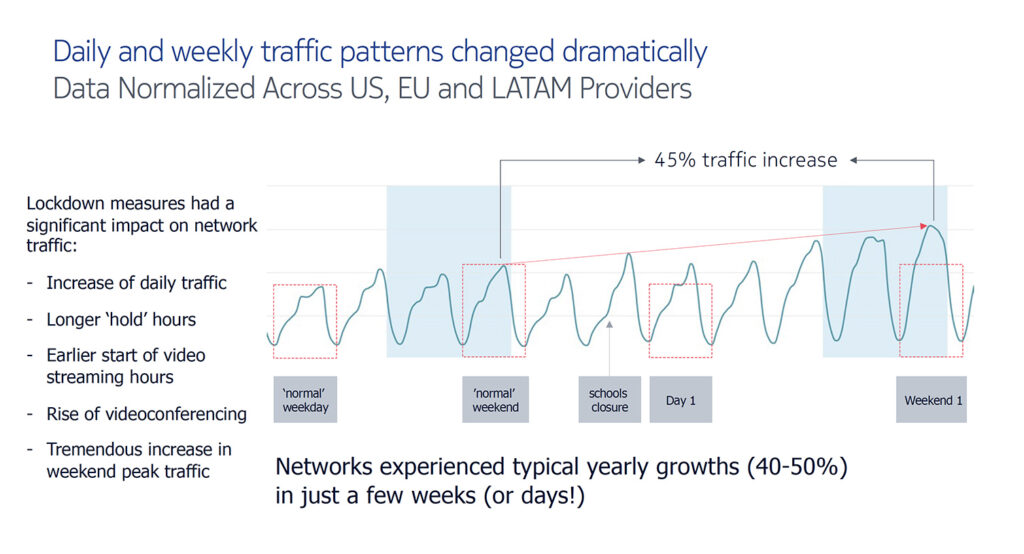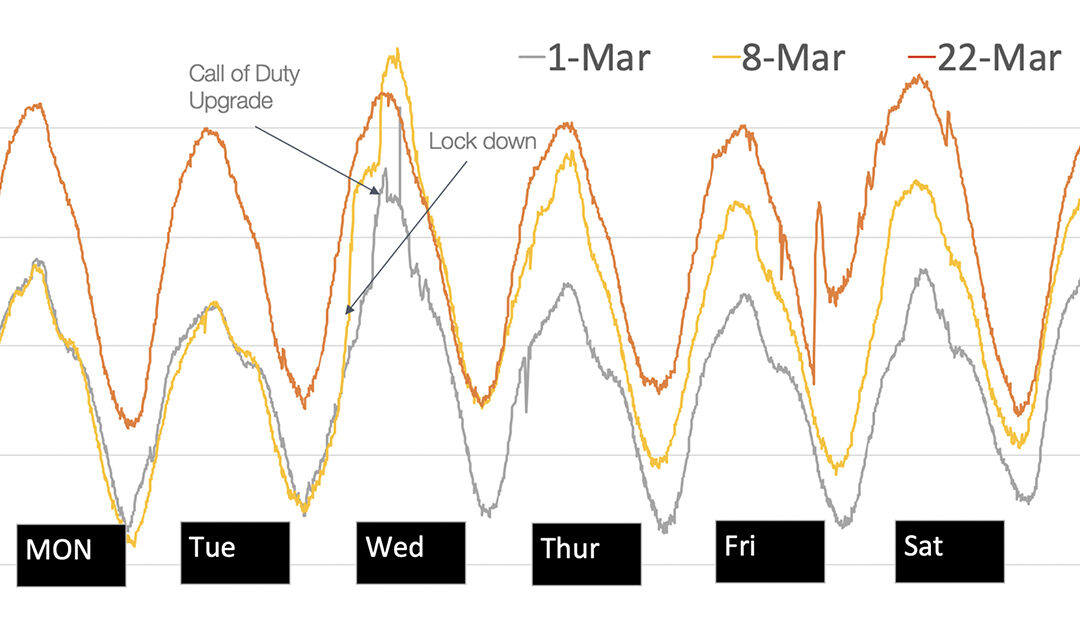This June, NANOG held its first all-virtual meeting, NANOG 79, in the midst of the ongoing global COVID-19 pandemic. Several of their talks were highly relevant to the “new normal” we are all experiencing, including one that looked at how the sudden lockdowns affected service provider networks.
During his talk, Craig Labovitz, CTO of Nokia Deepfield, examined network data, including real time telemetry, from a large subsection of NA, EU, LATAM and Asia service providers over the 8-10 week period of the COVID-19 lockdown.
Across the world, people’s lives changed rapidly – unless they were essential workers, everyone was staying at home as much as possible to avoid spreading COVID-19. Home network connectivity became essential to work, education, recreation, and staying connected to friends and loved ones. The normal rate of growth for a local service provider is 40-45% in a year. During the COVID-19 lockdown, that growth happened in just two weeks, and is largely persisting now.
“I think it’s a real testament to the capability of the network and engineering practices that the networks were able to handle the load,” said Labovitz.
Network flexibility was key to being able to keep up with demand, Labovitz said. Providers rapidly turned up new locations and added peers to ensure good quality of experience for applications such as Zoom, Netflix, and Whatsapp.
At NetActuate, peering is key to our keeping our networks resilient. During COVID-19, we’ve seen a significant increase in peering, both over public exchanges and private peering links, especially to last-mile/access peers and public cloud platforms.
During the lockdown, network usage also changed. Historically, bandwidth charts show spikes in demand over daily and weekly usage, cresting on Saturday and Sunday nights between 9:00 pm and 11:00 pm. During lockdown, the usage peaks widened and expanded into other times, showing more sustained use of bandwidth than before. Usage also became intrinsically tied to daily life, so much so that an online presidential speech in France saw real-time changes in bandwidth as video streaming usage went down during the speech, and live stream usage increased. (That being said, gamers didn’t seem to care as much as their usage stayed the same.)

Overall, bandwidth increases were largely driven by home and personal consumer end users watching online videos, videoconferencing, and playing online games. However, not all networks universally saw growth – due to many workers being asked to work remotely, many enterprise networks saw much lower traffic than before.
While it is pretty incredible that global networks were, and still are, able to keep up with the historic ongoing demand on our networks from the ongoing COVID-19 crisis, not all news is good. DDoS traffic is also increasing, and is up 40% from the beginning of the lockdown. At NetActuate, we know firsthand the challenges posed by DDoS attacks, and during COVID-19, have worked to ensure the resiliency of our DDoS AI platform.
To learn more details about the impact of the lockdown on local networks, we encourage you to watch the entire presentation by Labovitz at the NANOG website.
